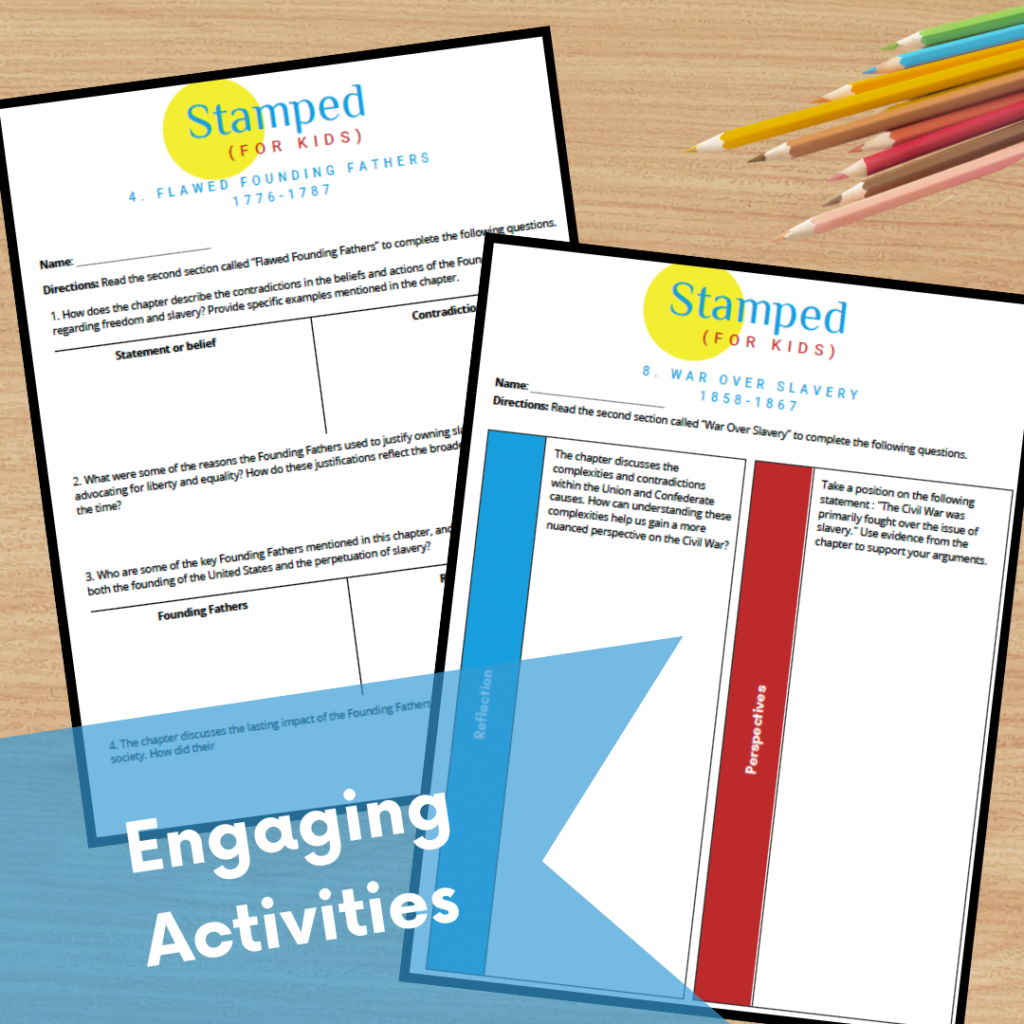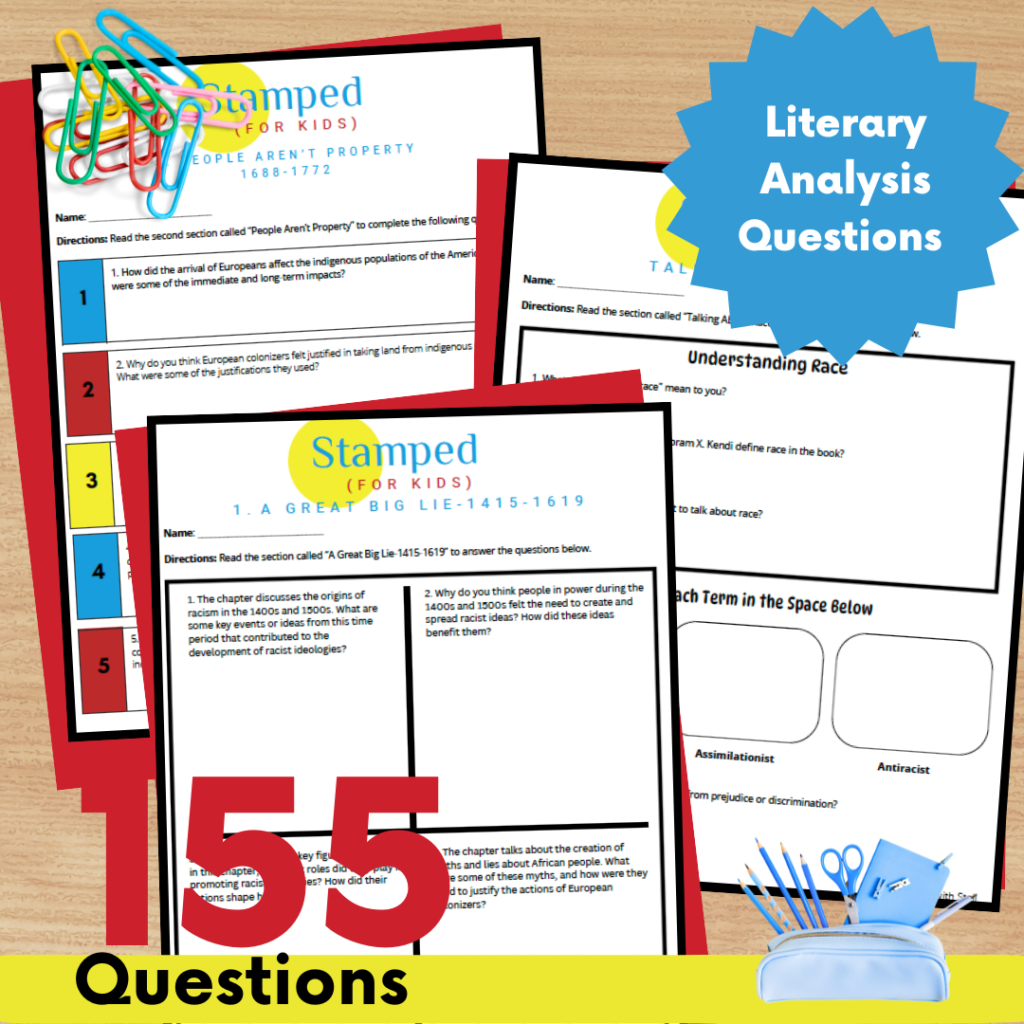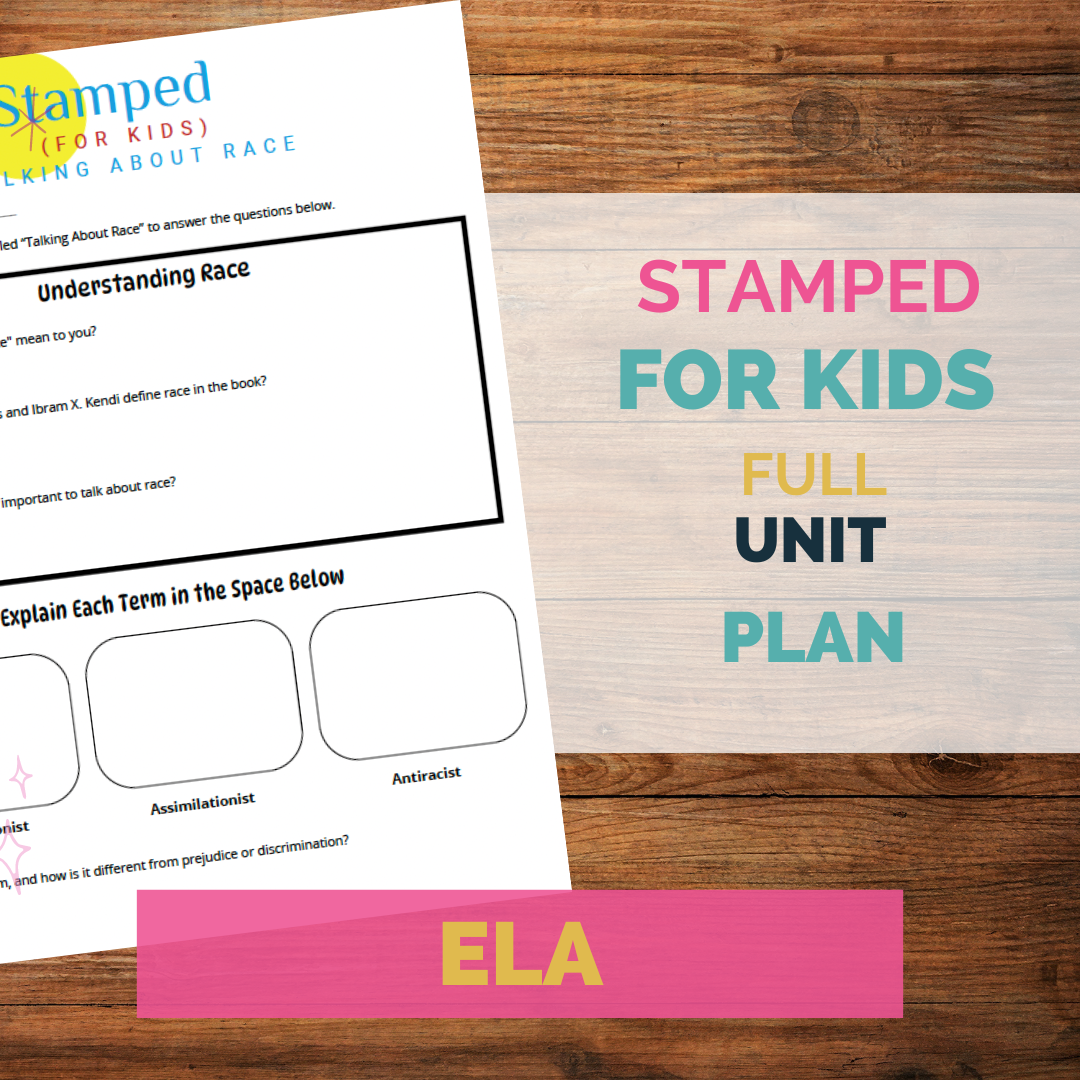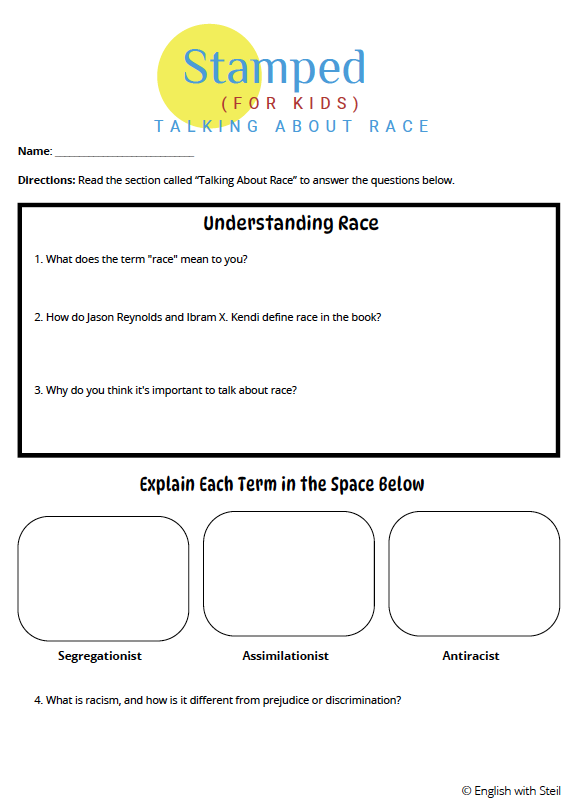
As educators, we carry the responsibility of shaping not just informed students, but compassionate and critical thinkers. Stamped (for Kids) by Jason Reynolds and Ibram X. Kendi is a powerful tool to help fulfill this mission. Teaching this book is more than just covering history; it’s about empowering students to understand and challenge racism, both in the past and in the present.
Why Teach Stamped (for Kids)?
Stamped (for Kids) offers a unique opportunity to discuss race and racism in a way that is accessible and engaging for younger students. The book breaks down complex ideas and historical events into language that students can understand without oversimplifying the issues. It connects the dots between history and the present day, making it clear that the struggles against racism are ongoing and relevant.
Teaching this book helps students develop critical thinking skills as they explore the origins of racist ideas and how they have been used to justify inequality. It also encourages empathy, by helping students understand the experiences of those who have been marginalized throughout history. Moreover, it aligns with many educational standards, including social studies and literacy, making it a valuable addition to your curriculum.
Strategies and Ideas for Teaching
Start with Open Dialogue: Before diving into the book, create a safe space for students to discuss what they already know about race and racism. This can be done through a class discussion or anonymous surveys. It’s important to establish that all questions and feelings are valid, and that this is a learning journey for everyone.
Chapter-by-Chapter Discussions: Break the book into manageable sections and discuss each chapter in detail. Encourage students to ask questions and express their thoughts. This can be done through guided reading sessions, where you read a chapter together and pause to discuss key points.
Historical Context Exploration: Stamped (for Kids) references many historical events and figures. Supplement your lessons with multimedia resources like documentaries, primary source documents, and guest speakers. This will help students build a deeper understanding of the historical context and see the real-world impact of the ideas discussed in the book.
Creative Projects: Encourage students to express their learning through creative projects. This could include writing a reflective essay, creating a visual art piece, or even developing a short play or skit based on a chapter. Creative expression allows students to process the material in a personal and meaningful way.
Connecting to Current Events: Help students draw connections between the book and current events. This can be done through classroom discussions, journaling prompts, or research projects. By linking past and present, students can better understand the ongoing nature of the fight against racism.
Empathy Building Activities: Use role-playing or perspective-taking exercises to help students empathize with those who have been affected by racist ideas and policies. These activities can be powerful in helping students internalize the importance of standing up against injustice.
Key Ideas Students Will Learn
Teaching Stamped (for Kids) will introduce students to several crucial concepts:
The Evolution of Racist Ideas: Students will learn how racist ideas have developed over time, often in response to social, political, and economic changes. They will see how these ideas were used to justify slavery, segregation, and other forms of inequality.
The Impact of Individuals: The book highlights how individuals, both famous and ordinary, have played a role in promoting or challenging racist ideas. This helps students understand that everyone has the power to make a difference.
The Power of Narratives: Students will explore how stories and narratives can be used to perpetuate stereotypes or challenge them. This is a critical literacy skill that will serve them well in all areas of life.
Empathy and Justice: At its core, Stamped (for Kids) is about fostering empathy and a sense of justice. Students will be encouraged to think about what fairness and equality mean and how they can contribute to a more just society.
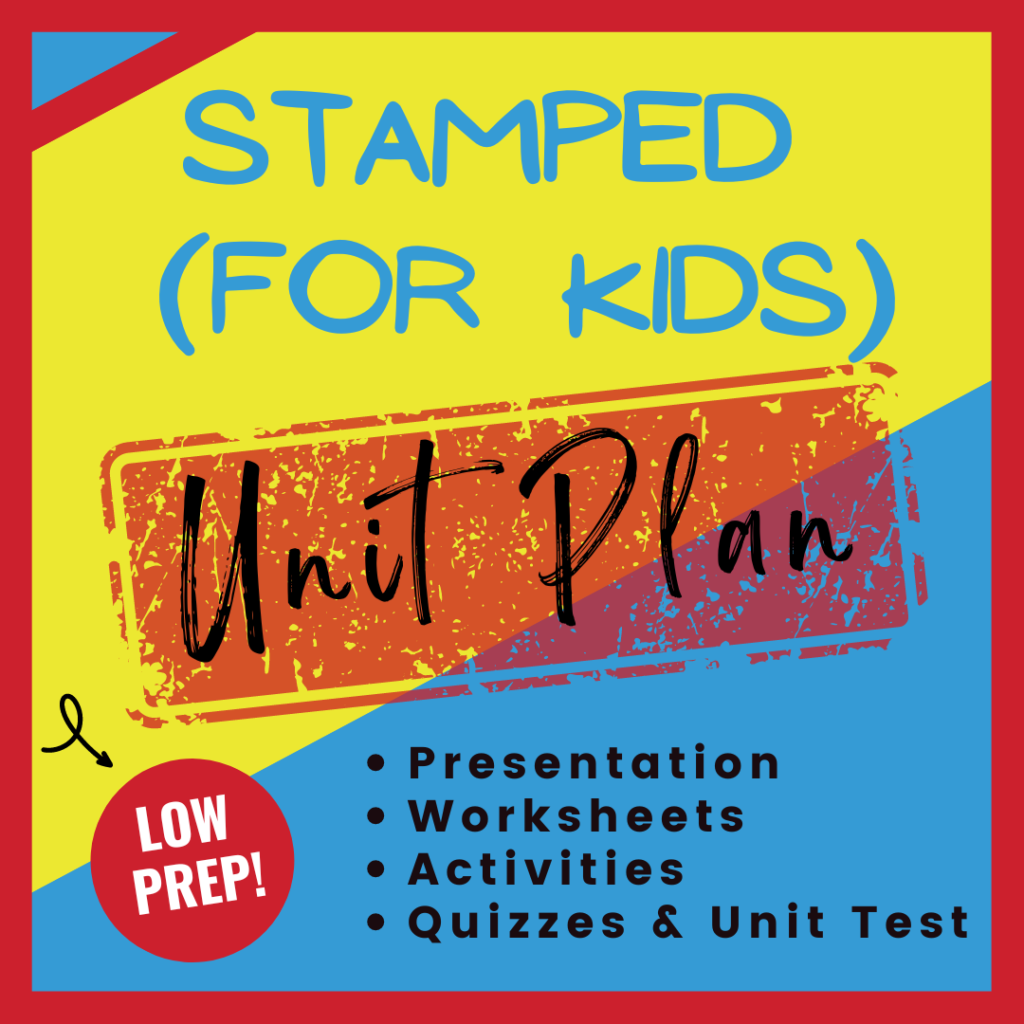
Conclusion
Teaching Stamped (for Kids) is a powerful way to help students understand the complexities of race and racism in America. It’s an opportunity to foster empathy, critical thinking, and a commitment to justice. By using thoughtful strategies and engaging activities, you can guide your students through this challenging but essential topic, preparing them to be informed and compassionate citizens.
Incorporating Stamped (for Kids) into your curriculum isn’t just about teaching history; it’s about helping your students understand the world they live in and empowering them to make it better. As educators, there is no greater goal.
Check out resources from my fellow teacher authors
Getting Started in Anti-Racist Self-Education (for Teachers) by Secondary Sara


